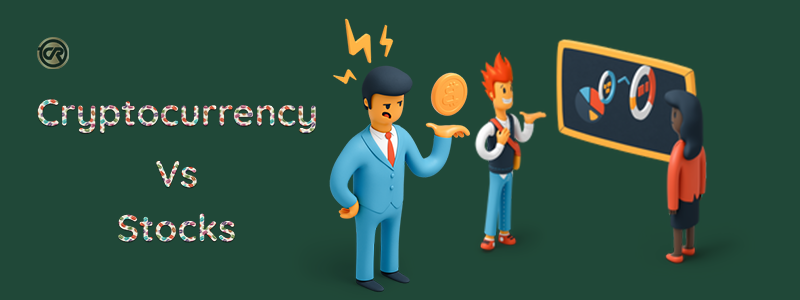
Stocks are a well-known asset class
that can produce returns over the long and short terms. Crypto on the other
hand is a more recent financial instrument that is prone to risk and price
volatility. Even though both instruments attract investors and traders, many
people see cryptocurrencies as an alternative to more traditional assets.
What Is a Cryptocurrency?
Cryptocurrency or crypto, in simple
terms, is defined as digital currency or electronic money powered by blockchain
technology. To verify and secure transactions, cryptos rely on cryptographic
techniques.
Cryptos are typically used as a store of value and medium of exchange. Their market is driven by demand and
supply, and most cryptocurrencies operate on decentralized networks.
Pros of
investing in crypto
·
Crypto is borderless and anyone can use it
·
Crypto is decentralized, making it resistant to
centralized control and censorship
·
They are inflation-resistant and are not directly
influenced by the monetary policies of central banks
·
More flexible as investors can get profit from
providing liquidity, staking, yield farming, ad trading
·
Many tokens have a value that goes beyond money with
fan tokens and governance tokens as examples
Cons of
investing in crypto
·
Volatility in price as the market is prone to sudden
price swings
·
Imperfect regulations across regions
·
Returns are not guaranteed
·
Custody risks such that you could lose your crypto
assets if you lose your physical wallet or phrase seed
What Is a
Stock?
Stocks, also known as equity, represent partial ownership in a functioning company and reflect the company's value. Units of stocks are referred to as “shares.” Shares entitle
the owner to a proportion of the company’s profits and assets in the form of
dividends.
A stock’s value can move according
to a company's performance and other factors including relevant news
announcements.
Pros of
investing in stocks
·
Increasing accessibility due to the emergence of many
mobile apps and online platforms in the market
·
Regulated by governments
·
Retails have a wide variety of stocks to select from
across different sectors and industries
Cons of
investing in stocks
·
Similar to cryptos, the stock market is vulnerable in
the short term to unexpected price changes
·
Relatively high fees when compared to crypto trading
·
Returns are not guaranteed
What Are the
Differences Between Cryptocurrencies and Stocks?
Although cryptocurrencies and stocks
belong to different asset classes, they can both be traded and used as
investment vehicles. Also, both markets have profitable strategies and can be
used by investors to create wealth. Nevertheless, investing in crypto is
different from investing in stocks.
Unlike stocks, investing in
cryptocurrencies doesn't entitle you to company shares. In the traditional
sense, crypto investors do not get dividends. Rather, you can stake or lend
your crypto tokens for passive income.
Another difference in both asset
classes is the way each is traded. While stock exchanges have restricted opening
hours on weekdays, you can purchase cryptocurrency at any time of day or night
at any digital currency exchange.
Should I Invest
in Cryptocurrency or Stocks?
Investing in both cryptocurrency and
stocks has its benefits and limitations. The decision depends on some
preferences such as your risk tolerance. In the end, your ability to balance
rewards and risks—rather than the investment vehicles you choose—determines
whether your investment is a success.
To get the best out of their
investment, many seasoned investors diversify their portfolios by investing in
both stocks and cryptocurrencies.
Watch
the video on cryptocurrency fundamentals.
Conclusion
There are similarities between
crypto and stocks, but they have differences too. Both are valid investment
choices that can serve different functions in your portfolio. Nevertheless,
ensure that you are aware of the DYOR and associated risks to which one you choose.
Stocks are a well-known asset class that can produce returns over the long and short terms. Crypto on the other hand is a more recent financial instrument that is prone to risk and price volatility.

Written by Sam